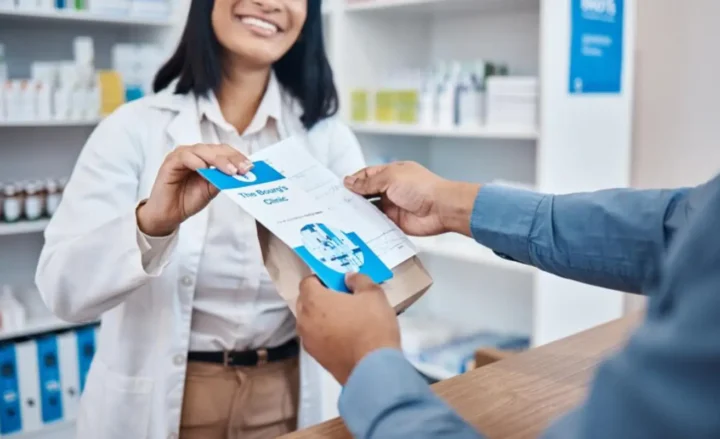Prescription Discount Programs: Increasing Medication Affordability for All
The rising price of prescription drugs is a headline issue for millions of Americans each year. Even with insurance, many patients are met with sticker shock at the pharmacy counter. In contrast, others, especially the uninsured or underinsured, face the tough decision of whether they can afford their needed prescriptions.
According to recent surveys, as many as 24% of Americans say they or a family member have not filled a prescription due to staggering costs. The issue is not limited to specialty medications; even basic generics or routine maintenance drugs can lead to overwhelming expenses.
In light of these ongoing financial stressors, there’s a growing focus on solutions to help consumers lower their out-of-pocket costs without jumping through hoops. Many have found relief through affordable options made possible by programs like BuzzRx. While these services aren’t a cure-all for the nation’s drug pricing problem, they’re reshaping how people think about prescription access, making lower prices achievable for everyone from young adults to retirees.
Prescription discount programs operate outside insurance architectures, bringing transparency and choice to the pharmacy experience. For millions of Americans worried about unexpected costs, they promise a simple, non-intrusive way to see real savings at the register.

What Are Prescription Discount Programs?
Prescription discount programs are services that negotiate discounted medication prices directly with pharmacies and drug wholesalers. These programs are free, open to anyone, and require minimal personal information. Users are typically offered a card or mobile app to access lower prices at participating pharmacies.
These programs work independently from health insurance or government coverage, allowing consumers to check for better prices regardless of their health status. Some even find their medication cheaper with a discount card than their insurance benefit. The simplicity of these programs, without sign-up fees, waiting periods, or restrictions based on preexisting conditions, makes them accessible to anyone.
Key Benefits for Consumers
Prescription discount programs provide immediate, upfront savings for consumers by applying discounts on the spot, eliminating paperwork and claims. Some users can save up to 80% on generics. These programs are not linked to patient medical records, making them useful for those without insurance or between jobs. They are widely accepted and easy to use, with most national pharmacy chains and local independent pharmacies participating.
Cards and codes can be used at over 60,000 locations nationwide, making access convenient for consumers. These features also give consumers a sense of control, removing barriers to medication adherence that could lead to adverse health outcomes.
How to Access a Prescription Discount Program
Prescription discount programs are easy to access and use, with most programs allowing users to start online by entering basic contact information. They can print cards or add them to mobile wallets in seconds. Many programs also offer websites or apps for real-time price comparisons at local pharmacies.
To access a prescription discount program, identify a reputable program with a strong record of security and privacy. Print a card, save it to your phone, or use a digital QR code. Search for your prescription and review local pharmacies offering the best deals. Present the card or code when paying for the discount.
Common Misconceptions and Limitations
Prescription discount cards are useful tools, but they cannot cover deductibles or offset other medical expenses. Discounts may vary depending on the medication, pharmacy chain, or geographic region. Specialty medications, rare drugs, and certain brand-name prescriptions may have modest reductions compared to generics.
Comparing prices at different pharmacies is crucial, and discounts and insurance cannot be stacked. Users must decide on the cost of the discount or insurance copay on a case-by-case basis. Setting realistic expectations can help users leverage discount programs effectively.
Effects on Public Health and Medication Access
Discount programs reduce prescription costs and improve patients’ lives by bridging the gap for those who might skip doses or stop taking medications due to financial hardship. The National Institutes of Health has found a direct link between reduced out-of-pocket costs and higher medication adherence rates for chronic diseases, leading to fewer complications and hospitalizations.
Improved adherence prevents unnecessary emergency room visits, helps manage chronic conditions effectively, and can lead to better job attendance and productivity. These programs also reduce healthcare access disparities for underserved or financially vulnerable populations.
Choosing the Best Discount Option for You
To choose the best discount option, consider pharmacy coverage, price comparisons, data transparency, and extra benefits. Ensure your preferred pharmacy accepts the discount program and compares prices regularly.
Data transparency is crucial as it outlines how user data is used and stored. Some programs offer reminders, refills, or connections to patient assistance programs. Using multiple discount cards is okay, but stay informed and proactive by asking about discounts each time a prescription is filled.
Final Thoughts
Prescription discount programs are becoming crucial in the U.S. to make essential medications more affordable and accessible. These programs, like BuzzRx, demonstrate the positive change that transparency and competition can bring to prescription pricing.
Consumers can safeguard their health and finances by comparing prices, checking program terms, and understanding each program’s unique features. These programs provide peace of mind and real savings for families dealing with chronic illnesses, new diagnoses, or uncertain job benefits.


